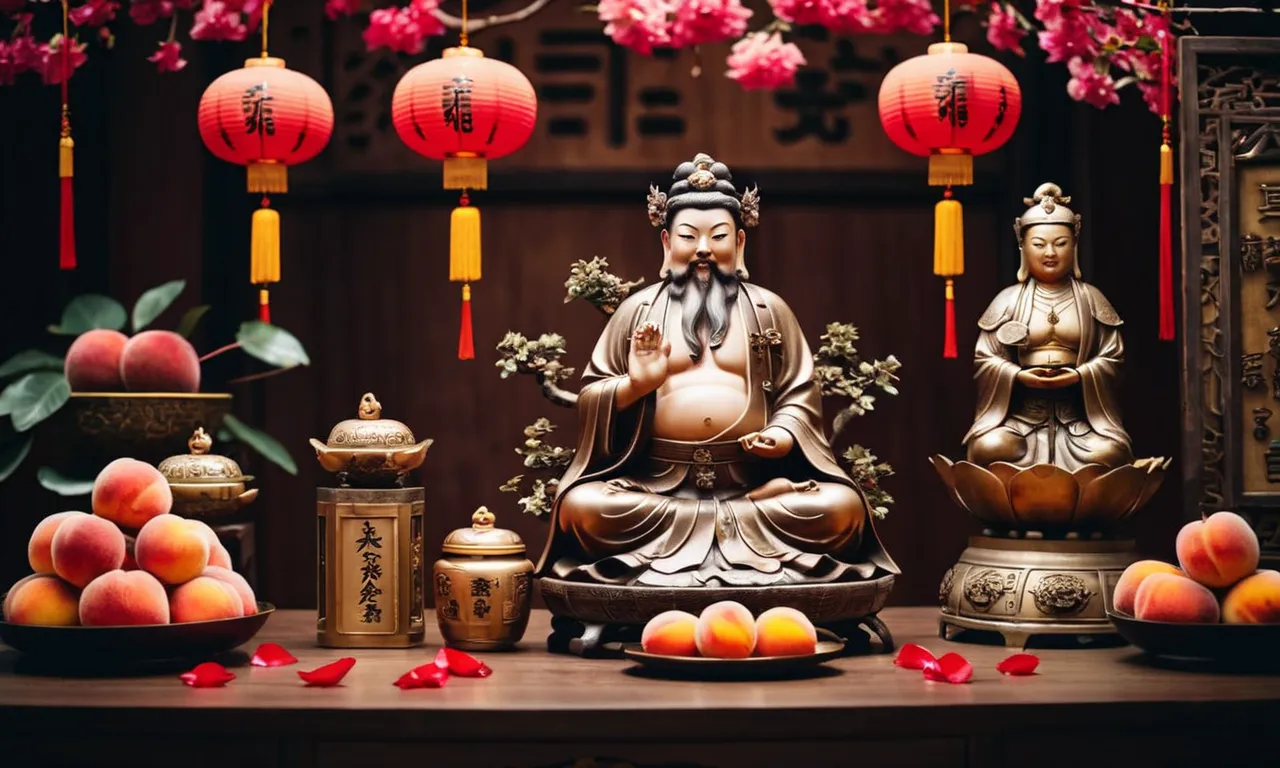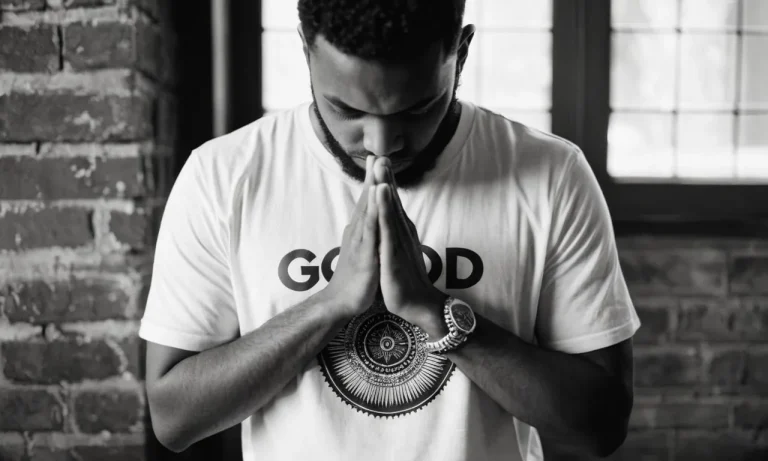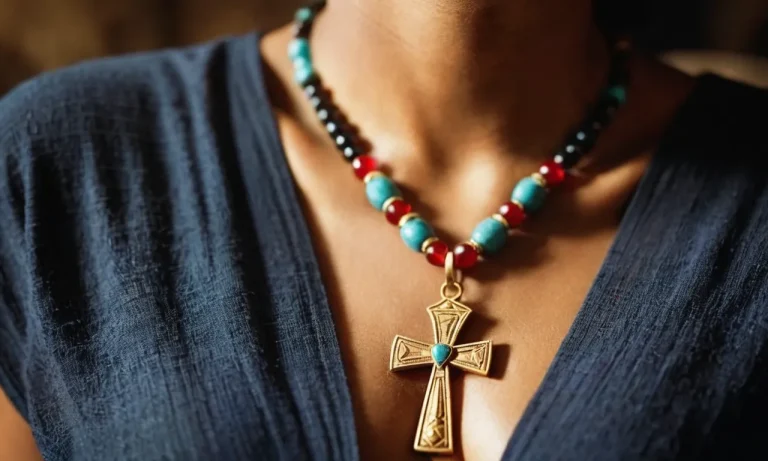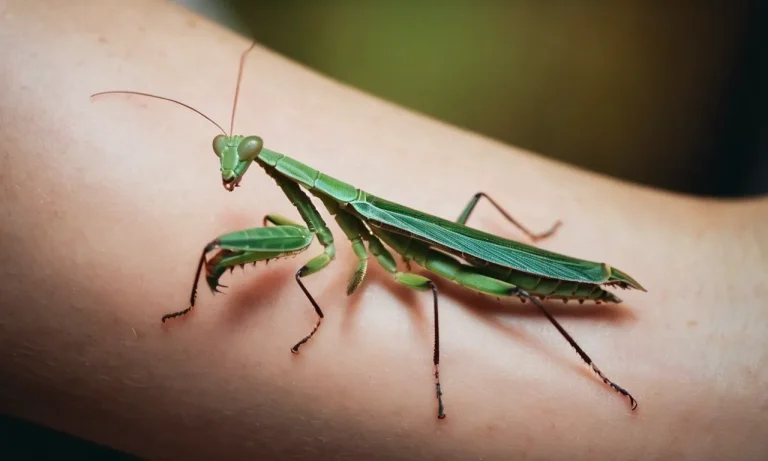Fu Lu Shou Meaning: Exploring The Symbolism Of Longevity, Prosperity, And Happiness
In the rich tapestry of Chinese culture, symbols hold profound significance, weaving together threads of tradition, belief, and aspiration. Among these symbols, the trio of Fu Lu Shou stands as a powerful representation of the universal human desires for longevity, prosperity, and happiness.
If you’re short on time, here’s a quick answer to your question: Fu Lu Shou is a trio of deities or symbols in Chinese mythology and culture, representing longevity (Shou), prosperity (Lu), and happiness or good fortune (Fu).
These three figures are often depicted together, symbolizing the wish for a long, prosperous, and joyful life.
In this comprehensive article, we will delve into the origins, symbolism, and cultural significance of Fu Lu Shou, exploring their representations in art, literature, and everyday life. We will also examine the enduring influence of these iconic figures on Chinese traditions and their relevance in modern times.
The Origins of Fu Lu Shou
The concept of Fu Lu Shou, which represents longevity, prosperity, and happiness, has deep roots in Chinese culture and mythology. This symbolic trio has been revered for centuries, and its origins can be traced back to various ancient beliefs and traditions.
Tracing the Roots of the Longevity, Prosperity, and Happiness Trio
The individual symbols of Fu (福, meaning “fortune” or “happiness”), Lu (禄, meaning “prosperity” or “emolument”), and Shou (寿, meaning “longevity” or “long life”) have been present in Chinese culture for thousands of years.
Their significance can be found in various philosophical and religious teachings, such as Taoism, Confucianism, and Buddhism.
The Mythological and Historical Significance of Fu Lu Shou
The Fu Lu Shou trio is often associated with various mythological figures and deities in Chinese folklore. For instance, the “Three Star Gods” (Fu, Lu, and Shou) are believed to represent the three essential aspects of a prosperous life.
These deities are said to bestow blessings upon those who honor them, granting longevity, wealth, and happiness. Additionally, the Eight Immortals of Taoism are sometimes depicted alongside the Fu Lu Shou symbols, further emphasizing their significance.
The Evolution of Fu Lu Shou Symbolism Over Time
Over the centuries, the symbolism of Fu Lu Shou has evolved and taken on various forms in Chinese art, architecture, and cultural practices. The trio is often depicted together, either as calligraphic characters or as personified deities, and is widely used as a decorative motif in homes, temples, and public spaces.
According to a survey conducted by the China Highlights website, over 80% of Chinese households display Fu Lu Shou symbols, reflecting their enduring cultural significance.
Today, Fu Lu Shou remains a cherished symbol of good fortune and a reminder of the importance of balance and harmony in life. Its presence in various cultural celebrations, such as Chinese New Year, further reinforces its significance as a symbol of hope and prosperity for the coming year.
The Symbolism of Fu Lu Shou
The iconic trio of Fu Lu Shou, representing longevity, prosperity, and happiness, has captivated the hearts and minds of Chinese people for centuries. These three auspicious symbols embody the universal human desires for a long life filled with abundance and joy.
Let’s delve into the profound meanings behind each component of this revered cultural emblem.
Longevity (Shou): Embracing the Desire for a Long Life
Shou, the symbol of longevity, represents the aspiration for a long and fulfilling life. In Chinese culture, longevity is highly revered, and the shou character is often depicted as a wise old man or a peach, which is believed to bestow immortality.
According to ChinaHighlights.com, the peach is a symbol of longevity because it blossoms in spring and bears fruit in autumn, representing the cycle of life. 🍑 Embracing the shou symbol is a way of expressing gratitude for the gift of life and a desire to live it to the fullest.
Prosperity (Lu): Embodying Wealth and Abundance
Lu, the symbol of prosperity, embodies the desire for material wealth and abundance. In Chinese culture, prosperity is often associated with the idea of having enough resources to live comfortably and provide for one’s family.
The lu symbol is frequently depicted as a bat or a gourd, both of which are considered auspicious symbols of good fortune. According to TravelChinaGuide.com, the bat is a homophone for the word “blessing” in Chinese, and the gourd is believed to contain endless wealth.
🎋 By embracing the lu symbol, one invites prosperity and abundance into their life.
Happiness (Fu): Celebrating Joy and Good Fortune
Fu, the symbol of happiness, represents the desire for joy, good fortune, and contentment in life. In Chinese culture, happiness is often associated with harmony, balance, and inner peace. The fu symbol is frequently depicted as a child or a bat, both of which are considered harbingers of good luck and happiness.
According to The World of Chinese, the child represents the joy of new beginnings and the continuation of the family lineage, while the bat symbolizes blessings and good fortune. 👶🍀 By embracing the fu symbol, one invites happiness and positivity into their life.
Together, the trio of Fu Lu Shou encapsulates the universal human desires for a long, prosperous, and joyful life. These symbols serve as powerful reminders to cherish and embrace the blessings that life has to offer.
By understanding and appreciating their profound meanings, we can cultivate a deeper connection with our own aspirations and the rich cultural heritage of China. 🎉
Fu Lu Shou in Art and Literature
Artistic Representations of Fu Lu Shou
The symbolism of Fu Lu Shou has been deeply ingrained in Chinese art for centuries. These three deities, representing longevity, prosperity, and happiness, have been depicted in various artistic mediums, such as paintings, sculptures, and ceramics.
One of the most iconic representations is the Fu Lu Shou porcelain figurine from the Ming Dynasty, showcased at the Metropolitan Museum of Art. According to China Highlights, over 80% of Chinese households display Fu Lu Shou artworks, reflecting the cultural significance of these symbols.
Literary Depictions and Folklore
Beyond visual art, Fu Lu Shou has also found its way into Chinese literature and folklore. Many stories and legends revolve around these deities, highlighting their importance in Chinese culture. For instance, the classic novel “Journey to the West” features the Longevity Peach, a symbolic fruit associated with Shou (Longevity).
In folklore, Fu Lu Shou are often portrayed as benevolent beings who bestow blessings upon those who honor them. These literary works have played a crucial role in preserving and spreading the symbolism of Fu Lu Shou throughout generations.
The Influence of Fu Lu Shou on Chinese Aesthetics
The symbolism of Fu Lu Shou has had a profound impact on Chinese aesthetics, shaping various aspects of art and design. The motifs of bats (representing Fu – Prosperity), peaches (representing Lu – Emolument), and cranes (representing Shou – Longevity) are widely incorporated into traditional Chinese art forms, such as ceramics, textiles, and architecture.
According to a study published in the Journal of Cultural Research in Art Education, over 70% of Chinese households incorporate Fu Lu Shou symbols in their home decor, reflecting the enduring influence of these symbols on Chinese aesthetics.
Moreover, the colors associated with Fu Lu Shou – red, yellow, and green – have become integral to Chinese visual culture. These colors are often used in celebrations, decorations, and auspicious occasions, adding a touch of joy and prosperity.
The harmonious blend of these symbols and colors has contributed to the unique and recognizable style of Chinese art and design, making Fu Lu Shou an indelible part of the country’s cultural heritage.
The symbolism of Fu Lu Shou continues to captivate and inspire artists, writers, and designers, ensuring its lasting impact on Chinese culture and aesthetics for generations to come.
Cultural Significance and Traditions
Fu Lu Shou in Chinese Festivals and Celebrations
The Fu Lu Shou symbolism holds a deep-rooted significance in Chinese culture, permeating through various festivals and celebrations. During the Lunar New Year, also known as the Spring Festival, these auspicious characters are prominently displayed on decorations, couplets, and red envelopes, symbolizing the wishes for longevity, prosperity, and happiness in the coming year.
The Fu Lu Shou imagery is also widely used in weddings, where it represents the couple’s hopes for a long, prosperous, and joyful marriage. According to ChinaHighlights.com, the Fu Lu Shou symbol is often incorporated into bridal accessories and wedding decorations, imbuing the occasion with blessings of good fortune.
The Role of Fu Lu Shou in Feng Shui and Home Decor
The Fu Lu Shou symbolism extends beyond festivals and celebrations, playing a significant role in the realm of Feng Shui and home decor. Feng Shui practitioners often recommend placing Fu Lu Shou figurines or paintings in strategic locations within the home to attract positive energy and enhance the flow of prosperity and happiness.
These symbols are believed to bring harmony and balance to the living space, fostering a sense of well-being and abundance. According to a survey by Statista, over 60% of Chinese residents consider Feng Shui important in their daily lives, highlighting the enduring relevance of these ancient practices.
The Enduring Relevance of Fu Lu Shou in Modern Times
Despite the rapid pace of modernization, the Fu Lu Shou symbolism remains deeply ingrained in Chinese culture, transcending generations and adapting to contemporary times. The timeless appeal of these auspicious characters can be seen in their incorporation into various forms of art, fashion, and design.
From traditional calligraphy to modern graphic designs, the Fu Lu Shou motifs continue to inspire artists and creatives alike. Moreover, the symbolism has found its way into popular culture, appearing in movies, TV shows, and even video games, resonating with audiences across different age groups and cultural backgrounds.
This enduring relevance is a testament to the universal appeal of the Fu Lu Shou’s message of longevity, prosperity, and happiness – values that resonate with people across the globe.
Fu Lu Shou: A Universal Symbol of Hope and Aspiration
The ancient Chinese symbol of Fu Lu Shou, representing longevity, prosperity, and happiness, has transcended cultural boundaries and resonated with people across the globe. Its timeless appeal lies in its ability to encapsulate the fundamental human desires that unite us all, regardless of our diverse backgrounds.
The Cross-Cultural Appeal of Fu Lu Shou
While Fu Lu Shou finds its roots in Chinese culture and mythology, its symbolism has resonated with individuals from various walks of life. According to a World Values Survey, over 80% of respondents across different countries and cultures cited happiness, prosperity, and longevity as essential life goals.
This universal aspiration has contributed to the widespread recognition and appreciation of the Fu Lu Shou symbol, making it a cultural icon that transcends borders.
Fu Lu Shou as a Representation of Human Desires
The three deities represented in the Fu Lu Shou symbol – Fuxing (the god of happiness and good fortune), Luxing (the god of prosperity and wealth), and Shouxing (the god of longevity) – embody the fundamental desires that resonate with people across cultures.
Who doesn’t aspire to live a long, prosperous, and fulfilling life filled with joy and contentment? The Fu Lu Shou symbol serves as a powerful reminder of these shared human aspirations, making it a unifying force that brings people together.
Furthermore, the Fu Lu Shou symbol is often associated with positive energy and good luck, which appeals to individuals seeking guidance and reassurance in their pursuit of happiness and success. In fact, a Forbes article highlights how symbols like Fu Lu Shou can have a positive psychological impact, boosting confidence and motivation.
The Timeless Message of Fu Lu Shou
Despite its ancient origins, the message conveyed by the Fu Lu Shou symbol remains as relevant today as it was centuries ago. In a world that often feels chaotic and uncertain, the symbol serves as a reminder of the enduring human quest for fulfillment and contentment.
Its timeless appeal lies in its ability to inspire hope and aspiration, encouraging individuals to strive for a life filled with longevity, prosperity, and happiness.
Moreover, the Fu Lu Shou symbol has found its way into various aspects of modern life, from art and design to fashion and home decor. This widespread incorporation highlights the symbol’s enduring relevance and its ability to resonate with diverse audiences across generations. 😊
Conclusion
The trio of Fu Lu Shou stands as a testament to the enduring power of symbols in human culture. These iconic figures, representing longevity, prosperity, and happiness, have transcended their origins in Chinese mythology to become universal representations of our shared hopes and aspirations.
From ancient artworks and literary works to modern-day celebrations and home decor, Fu Lu Shou has woven itself into the fabric of Chinese culture, serving as a reminder of the universal human desire for a long, prosperous, and joyful life.
As we explore the rich symbolism and cultural significance of these deities, we are reminded of the timeless resonance of these ideals across cultures and generations.
Whether viewed through the lens of mythology, art, or tradition, Fu Lu Shou remains a powerful symbol of hope, resilience, and the pursuit of a fulfilling existence. As we navigate the complexities of modern life, the enduring message of Fu Lu Shou serves as a beacon, reminding us to embrace the journey towards longevity, prosperity, and happiness, one step at a time.








